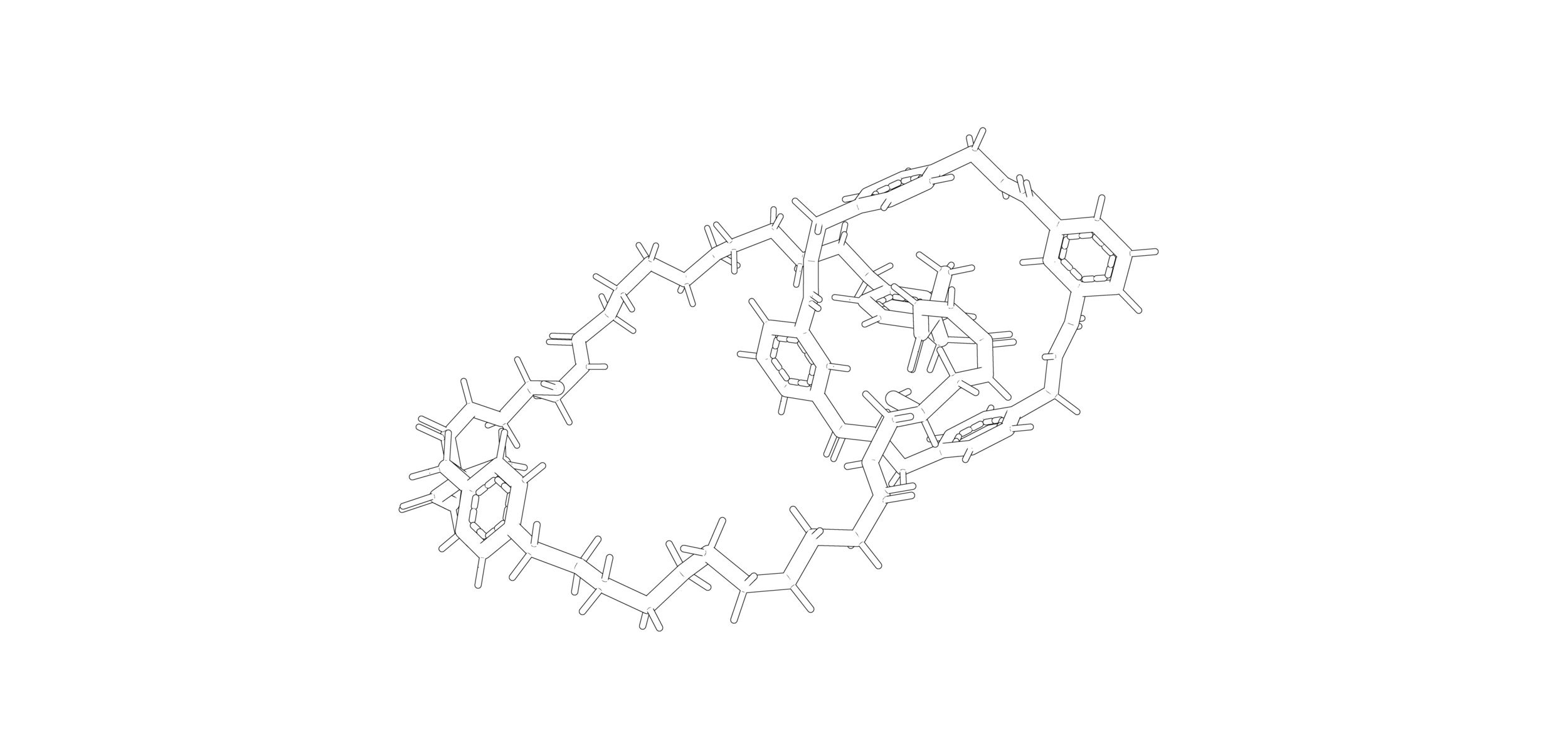
Simulation Tool for an Autonomous Catenane Nanomotor
Mechanically interlocked molecular architectures (MIMAs) are supramolecular assemblies that are made up of non-bonded molecular components. Rotaxanes and catenanes are members of this broad, topologically-complex, class of supramolecular assemblies. A rotaxane contains a long, dumbbell-shaped component that threads through at least one macrocyclic ring. A catenane contains two or more interlocked macrocyclic rings. Switchable rotaxanes and catenanes are designed such that a mechanical motion induced by an external stimulus results in a change in the system’s co-conformation. Switching may be induced electrochemically, photochemically, and by changes in pH, depending on the non-covalent interactions between the system’s subunits. Because of their switchable nature, these assemblies are promising candidates for nanoscale devices.
We considered an autonomous nanoscale motor based on a chemically fueled switchable [2]catenane that exhibits net unidirectional motion in ring shuttling. The system is composed of a benzylic amide ring interlocked with a “track” containing two fumaramide binding moieties. Adjacent to each fumaramide binding moiety, is a hydroxyl (–OH) site. The system is supplied with “chemical fuel,” a mixture of 9-fluorenylmethyloxycarbonyl chloride (FmocCl) and triethylamine for ‘autonomous’ operation. The –OH sites on the track react with FmocCl to form Fmoc "blockers." These blockers inhibit ring shuttling between fumaramide sites. Triethylamine initiates blocker cleavage. While this nanomoter is a significant synthetic achievement, its main limitation is that it takes approximately 12 hours for the small ring to make a full unidirectional cycle around the track.
We developed a simulation tool to explore the ring shuttling process and to determine features that could potentially be modified to influence the rate and directional preference of ring shuttling. Within the simulation tool, the adjustable parameters that must be specified are: temperature, total simulation time, energetic barriers to blocker attachment and cleavage, and the energetic barrier to ring translation. The initial state of the system is chosen such that the two blocker sites are occupied and the ring is randomly-assigned to one of the binding sites. Vibrational frequencies corresponding to the pre-exponential attack frequencies in an Arrhenius expression were calculated using semi-empirical methods.
The probability of surpassing the barrier for each process (cleavage, attachment, and translation) is calculated according to Boltzmann statistics. For example, during a blocker cleavage attempt, three probabilities are calculated: cleavage at the closer site (Pcleave-close), cleavage at the more distant site (Pcleave-far), and no cleavage (Pcleave-none). A random number between 0 and 1 (X) is generated. The calculated probabilities, value of X, and ring position determine which blocker (if any) is cleaved. The same procedure is applied when attempting blocker attachment and ring translation. A score parameter is incremented by −1 (backward), 0 (no hop), or +1 (forward).
Unidirectional ring translation is predicted only when there is a positional bias to blocker attachment (Eattach-close> Eattach-far), consistent with experimental results reported in the literature. Based on these results, we believe that simulations of this type have the potential to aid in the design and refinement of ‘autonomous’ switchable MIMAs for applications at the nanoscale.



